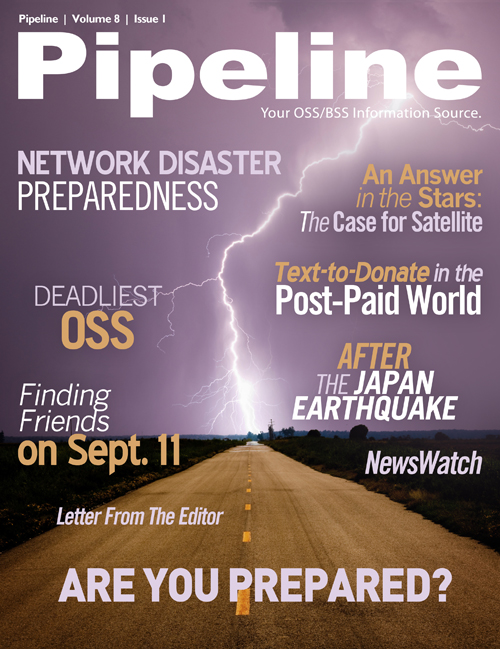By: Jesse Cryderman

I was a Boy Scout as a young man, filled with adventurous dreams of mountain summits and extreme weather survival. I idolized Zane Grey, Sir Edmund Hillary, Hemingway, and Eric Ryback, the first person to hike the 2,663-mile Pacific Crest trail at the ripe age of 17. My personal wilderness feats weren't groundbreaking, but they did shape my development and hey, I survived. And while I have forgotten how to tie 25 different knots, and my memory of bird calls is spotty, I've never forgotten the Boy Scout motto which informed all of the merit badges and survivalism: Be Prepared.
It seems like every month over the past year, news of a natural disaster streams across the airwaves and dominates our global consciousness for several days. From hurricanes to floods to earthquakes, an unrelenting recent cascade of natural phenomena appears bent on disrupting our communication networks. Whether Mother Nature is truly angry or we're just paying more attention, the fact remains that networks have had to face great challenges in the recent past, and have (hopefully) learned how to prepare for disasters. They must be prepared.
Disasters certainly come in many forms, but sometimes it's something as simple as a backhoe that severs critical data pipes, or a large-scale DoS attack that cripples infrastructure. No matter the form, most would agree that a persistent loss of communication and networking qualifies a disaster in and of itself, especially for businesses that deal in time-sensitive areas, like credit card processing or emergency healthcare. As a result, it is crucial that network providers have a plan in place that ensures reliability and resiliency through thick and thin.

So what are carriers doing to prepare for disaster situations? In this article we'll take a look from both the macro level—the availability of solutions—and the micro level, specific preparedness scenarios in different regions around the world.
Preventative Medicine
There are many methods carriers employ to ensure communications networks can weather disaster. Some, like routing undersea cabling away from fault lines and areas of seismic activity, are intuitive. Others, such as mobile cell towers, or COLTs (Cell towers on Light Trucks), are more creative. But a large component of the preparedness plan includes establishing plans ahead of time, testing networks for redundancy, simulating disasters, and integrating with the communities and businesses served to put strategies in place so that when disaster strikes the affected groups are ready with a plan of action.
Planning is crucial, because without a plan for recovery, chaos floods in. Gayle Rose, CEO of Memphis-based Electronic Vaulting Services, commented on the importance of planning for disaster in the Memphis Daily News. "The statistics that came out after Katrina were amazing," Rose said. "When a business suffers catastrophic loss, 43 percent never reopen their doors. Another 51 staggered on and closed within two years. Just 6 percent remained open."
Following disasters, carriers should, and in many cases do, coordinate with local communities to determine the best locations for temporary cell phone towers. Many providers also waive charges in affected areas for a period of time, enable mobile giving, and rapidly provision and distribute new devices to help family members find one another and maintain contact.
Disaster simulation is one way carriers determine what their networks can handle, giving them hard data to use internally and with local and national agencies. In April 2010 and 2011, Verizon held large-scale disaster simulations for both wireless and wireline operations. Similarly, AT&T conducted a full-scale disaster recovery simulation in Detroit last May, which simulated the loss of network operations due to manmade or natural disasters, and in October the carrier
But beyond simulations, carriers also have valuable location data that can be critical in both the planning and response to a disaster situation. NTT Docomo recently (May 24, 2011) completed two disaster prevention planning studies in conjunction with Japanese universities that "utilize(d) mobile spatial statistics to estimate the distribution of people in a given time period who would have difficulties returning home on foot if a major earthquake centered on Tokyo were ever to occur."
Most Tier 1 carriers now provide disaster response media kits in their online newsrooms, which serve as central repositories for general disaster preparedness information, or compile all relevant data about a specific threat, such as Sprint's Hurricane Season 2011 Press Kit. Most of these useful kits include a printable document that helps customers prepare for disasters. (For a good example, click here.)







